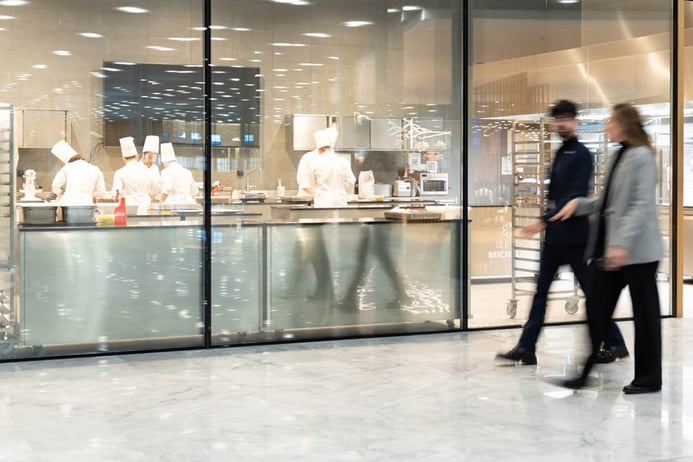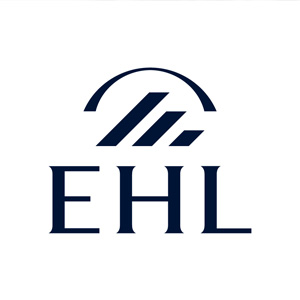With a view to developing custom executive education, IMD and EHL Graduate School have joined forces, tapping into the power of a local ecosystem to deliver sensory and intellectual learning experiences for real-world impact. In a landscape where disruption and change have become commonplace, executives must understand how to change the wheel of a car while it’s still moving - this requires a particular tool kit. Welcome to the premise of the “Innovation in Action” program, aimed at flexing business entrepreneurs’ innovation muscle.
Entrepreneurial & creative mindsets
In constantly changing times filled with increasingly unreasonable challenges, no prediction will hold true. Therefore, we need future shapers, curious entrepreneurial minds with the capability of boldly forging new solutions and breakthroughs.
Admittedly, we do not all feel equally confident in using our creative skills and imagination, but regardless form where we start, they can be nurtured. Rather like a fitness workout, individuals and teams can foster their creative mindset so that it can be actioned at strategic times. The Innovation in Action program emphasizes in-situ learning where the chance to practice in unfamiliar environments is pushed to the fore and people are encouraged to embrace the role of serendipity, helping participants to deal better with surprises and bounce back from failure.
When listening to world-renowned restaurateur, Claus Meyer, explain the winning formula of Noma restaurant which he co-founded in Copenhagen, it’s interesting to note how his attitude to innovative success comes from a scarcity mindset. For him, being truly entrepreneurial means making do with what you have as your starting point in your business venture. Meyer uses the metaphor of looking in the fridge and pantry, assessing the basic fundamentals, foraging around for some seasonal extras and then letting the creative imagination play around with the possibilities. Understanding how to create something magnificent and original out of ordinary components is when business creativity and ambidextrous thinking really get to work. In other words, letting inventive trial and error lead the way to a breakthrough rather than the more controlled corporate mindset, often known for killing creativity. It’s not that ROI or risk assessment are thrown to the wind, but a creative mindset knows how to offset their inventive boldness with a strong accent on calculated risk.
Academic collaboration for hands-on learning
The Innovation in Action program is itself a great example of how to create a dynamic collaborative ecosystem through effective partnerships with industry and academia. By partnering with nearby IOC and UEFA, the program offers an immersive learning journey through real-life business contexts and complexities, featuring regular input from the innovation branches of these two highly regarded organizations.
Moreover, an exciting and impactful new venture has begun now with IMD and EHL Graduate School as they join forces to deliver a part of the program. Leveraging EHL’s expertise in business creativity and its hospitality heritage, participants are taken on an experiential journey that uses the chef’s kitchen as a metaphor of the innovative mindset in action. The creative process is lived out via an experimental culinary challenge in state-of-art kitchens on the new EHL campus. Based on the premise that creative skills are best developed through concrete hands-on experience, this collaboration allows seasoned executives to be confronted with a sensory learning experience that takes them out of their comfort zone and challenges their ways of thinking and doing.
“When it comes to innovation, there is a tendency to think about technology before people. Our human-centric management philosophy at EHL advocates a renewed focus on the way people use their cognitive, emotional and social muscles to maximize business performance and innovation potential. EHL’s Graduate School proudly engages in a strategic partnership with IMD to deliver unique Executive Education experiences underpinned by this philosophy. Our distinct roots in hospitality and service business management allows us to contribute meaningful contexts and experiences in the learning journey. By bringing together the complementary strengths of our world-class institutions, we plan to redefine Executive Education, offering programs that provide applied sensory and intellectual learning experiences for real-world impact.” – Dr. Achim Schmitt, Dean of EHL Graduate School.
The link between entrepreneurship, creativity, and cooking
Dr Marc Stierand, (EHL Associate Professor of Service Management & Director of the Institute of Business Creativity), describes the relationship between entrepreneurship, creativity, and the cooking process
“What can business executives learn from top chefs? First of all, these eminent creators put into daily practice the art of business creativity, i.e., producing something new and valuable for their customers; sometimes with all the ingredients to hands, sometimes not (bearing in mind that culinary constraints are today compounded more than ever by dietary restrictions and allergies). Secondly, in the kitchen, it’s all about the imagination and the doing. In academia we overemphasize the cognitive aspects of human creativity, but much more fundamental is our sensory knowing. It is the foundation of and for all other forms of knowing. Without engaging our senses and emotions we cannot really understand anything, and we can certainly not take decisions.”
The EHL kitchen experience during the Innovation in Action course allows students to remove their head from the corporate routine of looking for the optimal solution and go with a more intuitive and collaborative instinct to achieve a breakthrough. The unfamiliarity of the learning context makes even the most experienced of managers abandon their routines and best practices, and open up to use their creativity and collaborate with others.
The exercise involves three groups of students, respectively tasked with producing a starter, a main and a dessert course out of a limited selection of ingredients. We are intentionally vague with the instructions given - this acts as a contrast to an executive’s normal day where everything is usually mapped out. To be taken out of one’s comfort zone is key to unleashing the creative spirit as one is confronted with having to use a different part of the brain.
The challenge demonstrates that it’s ok not to have any grand ideas at the start. The point is to start with what’s available and just see and sense how things develop. Talk to each other, let the ideas emerge and decide together what can be achieved. It’s critical to work as a team. Business creativity is a collective process since the possibilities emerge from building on a wide repertoire of skills and perspectives.
Business creativity can also be seen as a series of conversations among team members. What’s important is knowing how to have good conversations. Companies need to ensure a level of psychological safety so that disagreements and debates can result in a common conclusion based on a collaborative process. The entrepreneurial mindset feeds off dissent as part of the creative journey towards the outcome. This is very visible in the kitchen setting when ingredients are limited and not everyone has agreed on the menu: negotiation is required for who gets what and why. Understanding how to share risks and resources is key.
Dr Cyril Bouquet, (Professor of Strategy and Innovation & Director of the Innovation in Action program), explains the benefits of the experiential learning exercise at EHL
Many big companies are often drowning in resources, they have so much available that they don’t know where or how to get the creative process going. What we try to teach in the Innovation in Action program is that ‘less is in fact more’. When there are less resources there is also less confusion. It’s often easier to be innovative in a deprived environment than an abundant one.
I believe that innovation emerges when creative minds start to connect the dots and figure out how to combine the limited resources in new and different ways. This is why the exercise in the EHL kitchens is so valuable: it forces executives to be more inventive in terms of what they have and how to develop it to make up for what they need. Chefs have to constantly think in terms of how to use and combine what’s available - that is exactly what entrepreneurs have to do if they want to be successful.
For example, Noma, the no.1 restaurant in the world: they are experts at foraging in the forest and finding all kinds of interesting ingredients that are often overlooked. It’s not that they have access to ingredients that nobody else has – it’s all about making the right combinations. I teach ‘stealing with pride’ – finding inspiration outside, across different industries and organizations, in different countries and asking “how can I combine what I see that is interesting with what I have?”
In the kitchen exercise, it’s heartwarming to hear “What’s in your fridge, shall we swap ingredients?” because this is a sign of going from an egosystem mentality to one of a collaborative ecosystem. The logic being why make my pie better than yours? Let’s co-create and make a bigger collective pie!
There’s also the question of shifting leadership roles that is brought into play. We all take the lead at different times in different ways. When aiming to produce a great culinary dish, there’s a moment when chopping and preparation are key, so this task should be given to the most skilled chopper – regardless of hierarchy. In an entrepreneurial team, leadership is often shared for better outcomes. On a sinking boat, someone will automatically take the lead – and it’s not always who you think!
Experiential, interactive and authentic learning
The culinary challenge at EHL brings a form of learning that is experiential, interactive and deeply authentic, it adds credibility to the essence of what’s taught on the Innovation in Action course. As part of the classroom theory, the chef’s mindset and its link to entrepreneurship are often referred to, but at EHL they are delivered as an integral part of the real life learning experience.
Here, not only are students bonding and having fun as they learn, but they are gaining insights from the world’s best chefs in a very high level environment in terms of expertise and facilities. It is truly a unique and enriching moment full of priceless breakthroughs. The creativity and innovation achieved in a kitchen can be achieved in business!





